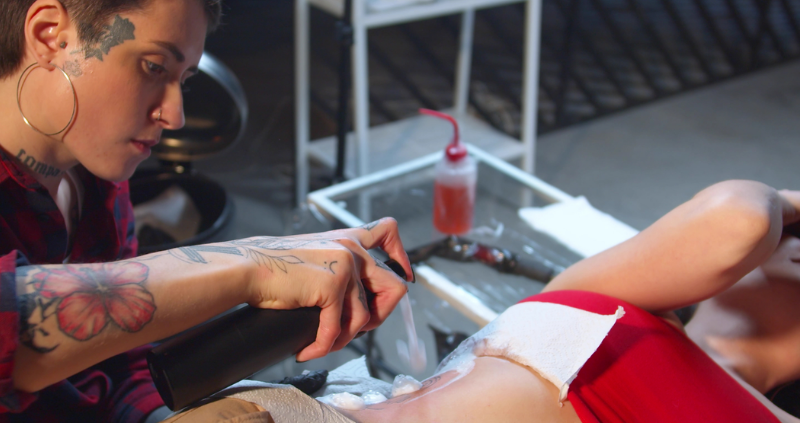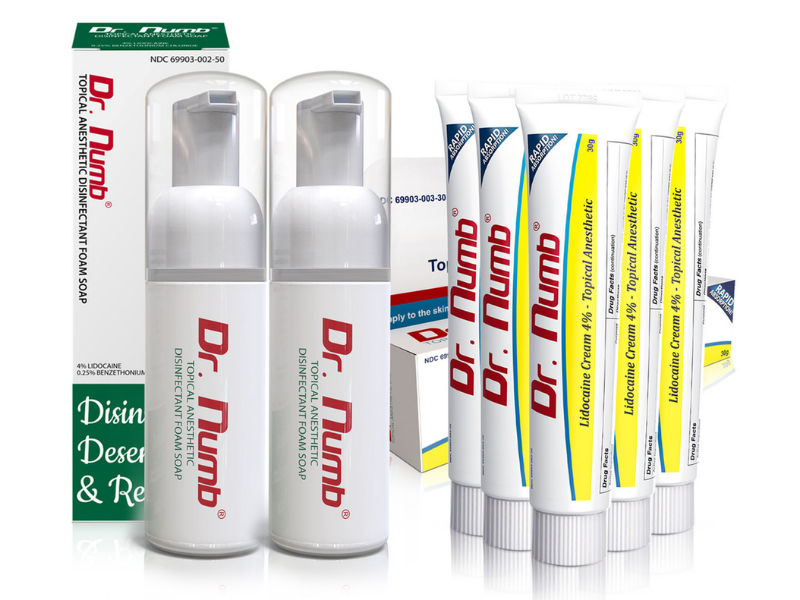How To Stop Tattoo Pain: Numbing Cream And Dr. Numb
There’s no doubt that getting a tattoo can hurt. Of course, the extent of pain depends on where the tattoo goes along with the type of tattoo, its style, color and other factors. There are ways to stop tattoo pain. Here are some that help with the pain.
Numbing Cream
You can use numbing creams to avert pain and one noted brand is Dr. Numb. Tattoo aficionados say it works well. There are other products out there. Check with Philadelphia tattoo shops. Ask them what they used to dull tattoo pain.
Numbing cream is available in both cream and liquids such as gels or sprays. You usually apply the cream before a tattoo sequence, and the liquids and other forms come when the tattoo process has started. Dr. Numb before the tattooist begins when the skin is still untouched by a tattoo needle. The gels or sprays are for a newly tattooed area in order for the product to get through to the surface skin.
Your Own Numbing Cream
Whether you’re getting several tattoos or removing old tattoos through a laser session, you probably should have your own numbing cream on hand, whether it’s Dr. Numb or some other reputable brand that the tattoo establishment recommends. It’s a good idea to have a personal bottle of your own at home to bring with you for the sessions.
Prior to Tattooing
Some people can endure the initial pain of a tattoo procedure for a short amount of time, but after that, the pain can be overpowering. Some will choose to numb the area before their appointment and there are certain areas of the body that are more painful when tattooed. With a tattoo, the area behind the knees, the ribs and the top of the feet experience the most pain. Numbing cream doesn’t eliminate all the pain, but it lessens it and makes the whole tattoo procedure less irritating.
If you’re intending on a lengthy session like a sleeve tattoo, the numbing cream will probably wear off. You want to think seriously about local tattoo shops near me for questions that you may have in numbing an area when a tattoo session takes longer to finish.
Apply The Cream At The Right Time
Since it takes about an hour for the cream to take effect, you want to figure out the exact timing with the session. You want it to be a true hour before you will undergo the process. If you know the session is going to belong, you’ll want to apply the numbing cream while you’re awaiting your tattoo and allowing for the tattoo artist’s preparation time.
When you apply the cream, you’ll also want to use gloves that are completely waterproof. You don’t want the numbing cream to get through to your fingertips and hands and make them numb. Make sure that you are applying the right amount of cream. Read all instructions before applying the cream.
Though not all numbing creams require you to place plastic wrap over the area being tattooed, it’s helpful to generate enough heat to speed up the numbing process. You’ll want to secure the wrap with medical tape.
Allow the plastic wrap to remain in the area for at least 30 to 45 minutes. That should be enough time for the numbing to take effect. Once the area is numb, you can remove the wrap. After the tattoo process is over, wash the area. You want to remove any residual leftover cream.
How Numbing Cream And Other Related Products Work
Numbing creams work at the surface level of the skin, where a tattoo needle or laser would reach. When the numbing cream remains on the skin for an hour to two hours, it can penetrate up to a sixteenth of an inch to three-sixteenths of an inch. Once a topical cream, lotion or gel penetrates the skin, they reach underlying nerves, and the longer the substances remain on the skin and penetrate it, the better they work.
Are There Side Effects from Using Numbing Cream?
There can be side effects with the use of numbing creams that’s related to incorporating epinephrine within the cream. The symptoms of a reaction usually include numbness with the lips or tongue, ringing ears, diplopia (double vision), and lightheadedness. There also could be reactions with the skin as contact dermatitis, a skin rash that usually happens with the regular use of numbing creams.
Precautions With Numbing Formulas
- You want to avoid too strong of a formula
- Make sure the formula is no more than 5 percent lidocaine
- Only use numbing creams externally
- Don’t use numbing cream on broken skin or any open areas (the cream can get into the bloodstream)
- Shy away from generating heat through heating pads to activate the numbing cream. Plastic wrap will help to produce heat
- Don’t use the cream any longer than the directions given
- Always consult with your health care provider, particularly when you have:
- a medical condition
- take prescription medication or have sensitive skin
Check With The Tattoo Artist
There are tattoo artists who are not supportive of the use of numbing creams. They have their reasons, mostly because of how the skin’s consistency is affected by numbing creams when you receive a tattoo. Also, there are occurrences of skin reactions to numbing creams, particularly on skin that has been shaved. You should always test with a skin patch before you use a numbing cream, anyway. In order to find out ahead of time about the use of numbing creams, consult with a tattoo artist whether they allow the use of numbing creams.
When you want to limit the pain of a tattoo application or you’re undergoing laser tattoo removal, it’s best to consult with your tattoo artist and the establishment where you’re having the work done. Contact Oracle Tattoo Gallery 215-638-1601. They’ll give you the information you need and establish the right timing with the numbing cream application. They know you want to be comfortable and as pain free as possible.




